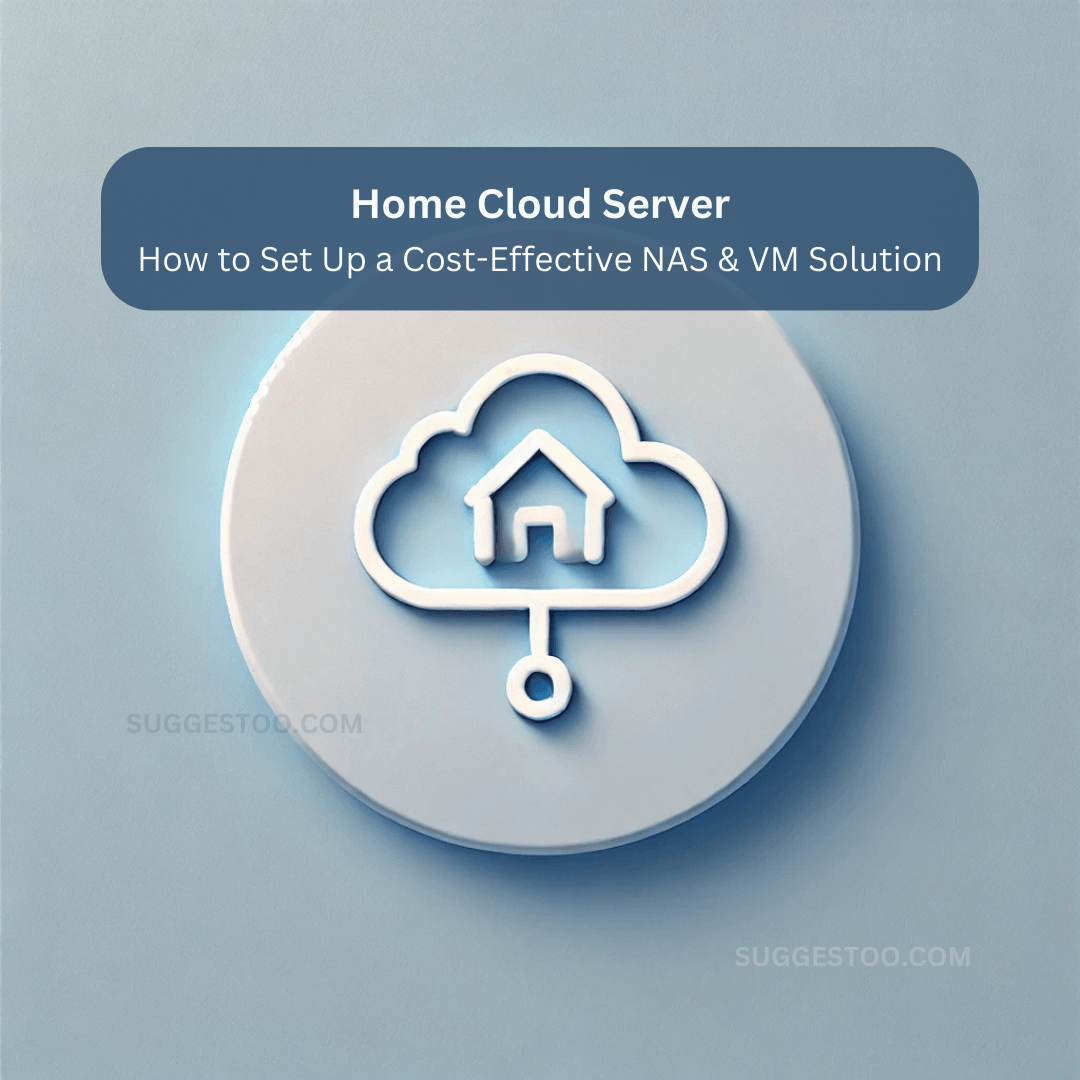Address
Bangalore, India
Are you thinking of setting up a home cloud server to manage your data, virtual machines (VMs), and applications efficiently? With NAS (Network-Attached Storage) and virtual machines, you can create a scalable and cost-effective solution. Many users are now shifting to cloud services like AWS, Google Cloud, and DigitalOcean to handle data, but how do these compare to traditional home networking options? In this post, we’ll break down the tools you need and the pricing models of major cloud providers, so you can decide the best solution for your needs.


What is a Home Cloud Server?
A home cloud server allows you to store files, run VMs, and manage applications from your own home network, rather than relying solely on third-party cloud services. This can be achieved using a NAS system, paired with tools like Proxmox, Docker, and Portainer for managing VMs and applications.
Why Use NAS and VMs for a Home Cloud Server?
NAS provides centralized storage that you can access from any device on your network, while VMs allow you to run multiple operating systems or applications simultaneously on a single server. Combined, NAS and VMs create a powerful, flexible home cloud server.
Key Tools for a Home Cloud Setup
- Proxmox: A robust platform for managing virtual machines.
- TrueNAS: A popular NAS solution for storing files and data.
- Docker & Portainer: Tools for managing and deploying containers.
- Pi-Hole: Network-level ad blocking, ensuring a cleaner online experience.
Cloud Providers: AWS, Google Cloud, Azure, DigitalOcean, Vultr, Linode
When setting up a home cloud server, it’s essential to compare the pricing and features of major cloud providers:
- AWS: Scalable and flexible, but costs can add up quickly for smaller users. AWS charges around $23/month for 1TB of S3 storage.
- Google Cloud: Similar to AWS in features, with competitive pricing, but also expensive for smaller use cases.
- Azure: Microsoft’s cloud solution is known for its enterprise capabilities but tends to be higher in cost.
- DigitalOcean: A cost-effective choice, with pricing starting at $5/month for VMs. Offers simplified management and scaling.
- Vultr: Offers affordable VM options with a user-friendly interface, starting from $2.50/month.
- Linode: Another budget-friendly alternative, with plans starting at $5/month for VMs.
Comparing Cloud Pricing for NAS and VM Setup
To give you an idea of which cloud provider may be more suitable for your home cloud server, let’s compare the pricing of each for both VMs and 1TB of cloud storage:
| Cloud Provider | VM Starting Price | Storage (1TB S3/Equivalent) |
|---|---|---|
| AWS | $3.50/month | $23/month |
| Google Cloud | $4.00/month | $22/month |
| Azure | $5.00/month | $23/month |
| DigitalOcean | $5.00/month | $10/month |
| Vultr | $2.50/month | $5/month (Block Storage) |
| Linode | $5.00/month | $10/month |
Total Cost of Ownership for Home Cloud Server vs. Cloud Provider
Setting up a home cloud server with NAS using tools like Proxmox and TrueNAS may have a higher upfront cost due to hardware purchases but could save you money long-term compared to monthly cloud provider fees. If your storage and processing needs are relatively low, investing in hardware may be more cost-effective over time.
Advantages of Using Proxmox for VM Management
Proxmox is a highly flexible and open-source platform designed for managing virtual machines and containers. It supports full virtualization, meaning you can run different operating systems on a single server.
Using Docker for Efficient Application Management
Docker allows you to deploy and manage applications in isolated containers, making it perfect for home cloud setups. With Docker, you can run multiple services like media servers, game servers, or web applications with ease.
Is Pi-Hole Worth Adding to Your Setup?
Pi-Hole acts as a network-wide ad blocker, ensuring faster browsing speeds and privacy. It integrates easily with your home cloud setup, making it a great addition for anyone looking to enhance their network security and performance.
Conclusion: Which Option is Cheaper for You?
If you’re planning to set up a home cloud server, the costs depend on your specific needs. For small to medium setups, using DigitalOcean or Vultr might be more affordable. On the other hand, for long-term usage, a home NAS paired with tools like Proxmox and Docker could save you money over time.
FAQs:
DigitalOcean and Vultr tend to offer the most affordable options for smaller setups, but AWS and Google Cloud can provide scalability if needed.
NAS (Network-Attached Storage) is a physical device in your home network, while cloud storage is provided by external providers like AWS or Google Cloud, offering remote access and scalability.
Yes, Proxmox is a powerful open-source platform for managing virtual machines and containers, making it ideal for a home cloud server setup.
AWS S3 storage costs approximately $23 per month for 1TB of standard storage, though prices vary based on usage and data transfer.
Docker is not required but is highly recommended as it allows for efficient containerization and management of applications across your virtual machines.
External Links for More Insights:
Disclaimer:
This blog post is created based on information sourced from various news channels and reports. It is not intended as direct news or an official statement. The content has been compiled and interpreted for informational purposes only, in accordance with India’s Broadcast Rule 2024. Readers are advised to verify the details independently and view this post as an analysis or opinion rather than direct news reporting.
Follow Us:
For all the latest news and tech updates, be sure to follow suggestoo.com! Stay informed with the freshest insights and trends.




